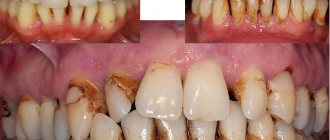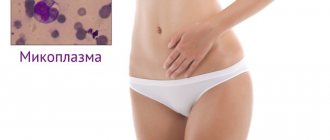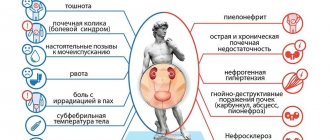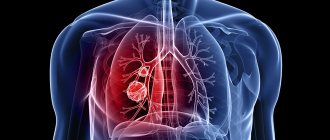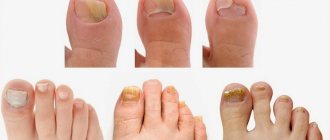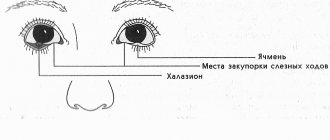Chest pain is a problem that affects a large number of people regardless of age.
Quite often it can be both a consequence of a disease and a warning sign about its development.
Often chest pain appears along with diseases of the spine (osteochondrosis).
In medicine, chest pain caused by pinched intercostal nerves is called thoracalgia.
Pain associated with thoracalgia is confused with heart disease, but the nature of this pain syndrome is completely different.
What is thoracalgia and its features
Thoracalgia (or intercostal neuralgia) is pinching or compression of the intercostal nerves by muscles, tissues or ligaments, which leads to acute pain in the chest area.
The syndrome is divided into:
- vertebrogenic thoracalgia (pain in the thoracic spine);
- musculoskeletal thoracalgia; psychogenic thoracalgia (caused by fatigue and physical exertion, panic attacks);
- left-sided and right-sided thoracalgia;
- Thoracalgia during pregnancy (caused by the effect of the fetus on the spine);
- chronic thoracalgia.
Video on the topic:
The manifestations of thoracalgia are indeed similar to pain in the heart, so you should not take them lightly and at the first sign you should consult a doctor or call an ambulance.
Causes
Thoracalgia of a vertebrogenic nature usually develops against the background of degenerative-dystrophic diseases of the spinal column, in which the intervertebral discs are damaged. Destruction of the disc leads to disruption of its shock-absorbing properties, narrowing of the distance between the vertebrae and pinching of the spinal roots in the thoracic spine. The disease can develop as a result of back injuries, viral infections, and hereditary pathologies of the musculoskeletal system. The most common cause of chest pain is considered to be a complicated course of osteochondrosis.
Osteochondrosis is the most common cause of thoracalgia of vertebrogenic nature.
The main causes of vertebrogenic thoracalgia include:
- osteochondrosis of the spinal column, accompanied by protrusions and herniations of intervertebral discs;
- curvature of the spine - pathological kyphosis and lordosis, scoliosis;
- back injuries in the thoracic spinal column;
- spondyloarthrosis – degenerative damage to the facet joints of the vertebrae;
- herpetic infection that causes inflammation of the intercostal nerves - herpes zoster;
- spasm of the muscular frame of the back - muscular-tonic syndrome;
- intense axial load on the spine due to heavy physical labor or sports;
- Scheuermann-Mau disease is a deformation of the spine during the period of skeletal growth and the development of pathological kyphosis.
When exposed to unfavorable factors, the nerve roots are damaged due to compression by displaced vertebrae, hernial protrusions and fragments of deformed bone tissue. Spinal nerves can become irritated by spasmed surrounding muscles or become inflamed as a result of infection.
Based on the nature of its occurrence, vertebral thoracalgia is divided into several types:
- The traumatic form is a tear of the nerve root.
- The compression form is a pinched nerve root.
- The inflammatory form is an inflammatory process of the nerve tissue of the root.
Compression of the spinal nerve leads to pain and radicular syndrome
In any form of the disease, the spinal nerve swells and increases in volume, which leads to disruption of blood flow and metabolism of nervous tissue in the area of pathology. This causes pain of varying degrees of intensity and neurological manifestations. Damage to the nerve tissue of the root of one nature or another disrupts the conduction of nerve impulses and leads to deterioration in the function of organs and parts of the body that the affected spinal nerve innervates.
Causes of chest pain with thoracalgia
Chest pain with thoracalgia can be caused by a number of reasons, the main ones being :
- curvature of the spine (scoliosis);
- intervertebral hernia;
- frequent overwork and intense physical activity;
- back injuries;
- osteochondrosis;
- diseases of internal organs and heart;
- psychological factor.
It is worth remembering that thoracalgia is a consequence of any disease, therefore, if its symptoms are detected, it is necessary to consult a doctor as soon as possible to determine the causes of its occurrence.
Thoracalgia with osteochondrosis
The area of the spine affected by osteochondrosis literally “presses” on the chest, causing compression (squeezing) of the intercostal nerves - thoracalgia
Osteochondrosis of the thoracic spine is one of the most common causes of chest pain (thoracalgia).
Osteochondrosis is caused by inflammation of the intervertebral tissues, which entails a change in the structure of the affected area of the spine.
The main causes of thoracalgia in osteochondrosis:
- inflammation of the spinal cord roots;
- spinal cord root injuries;
- infringement of the spinal cord roots.
Symptoms of the disease
Pain during thoracalgia occurs in attacks lasting several minutes
Thoracalgia with osteochondrosis of the thoracic spine is accompanied mainly by pain in the chest and back.
These pains can vary both in their specificity and in duration and intensity.
The attacks last for several minutes, causing the patient severe pain and causing panic, which negatively affects the psychological state of the patient.
In the presence of thoracalgia against the background of osteochondrosis, the patient’s body temperature almost always rises.
There is a decrease in pain sensitivity, both due to compression of the nerves, and in contrast to severe pain during an attack.
The main symptoms of thoracalgia include:
- pain, burning in the ribs;
- exacerbation of chest pain when turning the body, coughing, breathing;
- crunching of the vertebrae when straightening the spine;
- increased pain with hypothermia;
- worsening when staying in one position for a long time.
In addition to pain, a whole list of accompanying symptoms appears, described above (crunching in the back, increased pain in the chest in the cold and in a static position, pain between the ribs) and such as:
- hair loss;
- bluish skin areas in the chest area;
- the occurrence of skin cuts.
Symptoms of the disease
Thoracalgia syndrome has various symptoms, depending on the cause, type, and degree of damage. Among the main ones are:
- paroxysmal, prolonged, girdling, localized pain;
- pain radiating to the neck and lower jaw;
- sensations intensify when sneezing, coughing, taking a deep breath;
- burning in the ribs;
- numbness of the skin;
- the affected areas are palpated;
- Hypothermia and prolonged stay in one position aggravate the disease.
Main signs of the disease
Regardless of its nature, the disease is accompanied by the following symptoms:
- difficulty breathing, which is accompanied by discomfort and pain;
- tingling in the chest;
- impaired sensitivity in the limbs;
- muscle twitching;
- the crunching of the vertebrae is heard;
- increased sweating;
- general weakness;
- headache;
- sleep disturbance;
- chilliness;
- tremor (rhythmic oscillatory movements of body parts);
- increase in body temperature.
Difference between heart disease and vertebrogenic thoracalgia
Vertebrogenic thoracalgia (thoracalgia caused by back diseases, in particular osteochondrosis) is similar in its manifestations to heart disease, not so much in terms of symptoms, but because of prejudice and fear of a heart attack and death.
Chest pain should not be underestimated, but it is necessary to sensibly classify and differentiate it. For clarity, the differences between the signs of thoracalgia in back diseases and heart diseases are presented in table form :
| Signs and manifestations | Thoracalgia with osteochondrosis | Chest pain due to heart disease |
| Specifics of pain | Pressing pain, burning, panic, fear of death | aching and stringy |
| Duration of pain attacks | Quite transient, lasting a few minutes | It can last for minutes, hours, or even days. |
| Intensity of pain when moving and changing the position of the spine | Remains the same | Changes. The pain intensifies especially with sudden movements. |
| Physical exercise | Heart pain results from exercise | Intensifies with loads on the spine |
| Taking analgesics and nitrate-containing drugs | Almost always passes | May subside only after taking analgesics |
| Physiotherapy, manual therapy | Has virtually no impact | Causes visible improvements |
General information about pathology
Thoracalgia is a syndrome in which there is pain in the chest. Pain in one form or another is present in the patient every day, but at certain moments it intensifies (for example, when lifting weights, exercising, and so on).
Intercostal neuralgia is not an independent disease, but only a clinical manifestation of a primary disease or condition (for example, injury). It turns out that it is not thoracalgia that is being treated, but the disease against which it arose.
Thoracalgia of the spine
Not all chest pain is thoracalgia, since this diagnosis refers to pain associated with compression (squeezing) or irritation of the intercostal nerves. Angina pectoris, chest “deep” pain, pain in the thoracic esophagus do not belong to classical thoracalgia, but belong to its extended type.
Accordingly, neurologists, orthopedists and traumatologists are involved in the diagnosis and treatment of this syndrome. In the simplest cases, when the syndrome is caused by physical inactivity and detraining of the body, treatment can be carried out by a general practitioner - a therapist.
Differential diagnosis of the syndrome is carried out in all cases in order to exclude much more serious diseases associated with damage to the lungs, heart or esophagus.
The syndrome itself does not pose a threat to life, and the pain associated with it is relatively rarely painful (if this happens, it is usually episodic, in attacks of 5-10 minutes). In contrast, primary diseases that cause thoracalgia can lead to disability (for example, if the patient has the syndrome due to scoliosis).
Reasons for appearance
Intercostal neuralgia occurs against the background of traumatic, inflammatory and degenerative diseases of the spinal column. With such pathologies, compression or intermediate irritation of the intercostal nerves occurs, which is the cause of pain.
The development of the syndrome at a young age is often compared with the presence of Scheuermann-Mau disease, which causes a pathological increase in kyphosis and, in the absence of timely treatment, vertebral deformation.
Localization of pain during thoracalgia
People over 18 years of age are at risk of developing thoracalgia. Men are affected approximately twice as often as women, due to more frequent back injuries and heavy physical work.
List of diseases and conditions that most often cause thoracalgia:
- Osteochondrosis of the thoracic spine (any form and stage).
- Scoliosis (2-4 degrees) and kyphoscoliosis.
- Various traumatic injuries of the thoracic spine.
- Herniated discs.
- Protrusion of vertebral discs.
- Excessive load on the spinal column (work as a loader, prolonged sitting, sudden lifting of heavy objects with subsequent back injury).
- Chronic spasm of the back muscles.
In approximately 45% of cases, the cause of intercostal neuralgia is injuries to the spinal column. These are not necessarily severe injuries; in some patients, chronic pain arose due to injuries that they did not even remember (these injuries were so minor).
The second most common cause is osteochondrosis, which in modern realities is detected during routine diagnostics in every third person.
Types of syndrome
Thoracalgia is divided into several types depending on the root cause and severity of the process. Treatment tactics and the overall prognosis for recovery directly depend on what type of intercostal neuralgia the patient has.
Features of vertebrogenic thoracalgia
There are six types of thoracalgia:
- Vertebrogenic or vertebral appearance. The pathology develops against the background of damage or chronic/acute diseases of the spine. Treatment in the vast majority of cases is conservative.
- Musculoskeletal view. Pathology occurs against the background of overload, injury or autoimmune processes in the osteochondral and muscle structures. The most difficult type of thoracalgia to treat.
- Psychogenic appearance. It occurs against the background of severe emotional and physical fatigue (stress). Usually observed in suspicious people, often suffering from hypochondria or VSD (in the post-Soviet space, this diagnosis is synonymous with hypochondria).
- Chronic appearance. Thoracalgia lasts for a long time, more than three months and, as a rule, is moderate (the pain is mild, the general condition of the patient is favorable). Typically, the chronic type of syndrome is associated with degenerative-dystrophic diseases in the spinal column.
- Double-sided view. The pain is localized not on one side of the chest (the typical, classic course of thoracalgia), but on both. The most severe type of disease
- Thoracalgia in pregnant women. The pathology occurs against the background of overload of the spinal column due to carrying a fetus in the womb and due to the fact that the fetus puts pressure on the structures surrounding the placental tissue. The syndrome resolves on its own after childbirth.
Vertebrogenic gymnastics (video)
Symptoms and diagnosis
Symptoms of thoracalgia are few and usually associated with varying degrees of pain or discomfort in the chest.
The main symptom of thoracalgia is pain
Most patients (more than 80%) experience the following symptoms of thoracalgia:
- burning pain that occurs in attacks in the chest area, which is most pronounced in the intercostal spaces;
- increased pain when coughing, sneezing, or trying to take a deep breath;
- increased pain when palpating the tissues of the chest (especially when pressing on the intercostal spaces) or the spinal column;
- the occurrence of pain in the area of the heart (for this reason, many patients mistakenly believe that they have heart disease).
Differential diagnosis of intercostal neuralgia is carried out with diseases of the bronchopulmonary and cardiovascular systems. In case of very severe pain, differential diagnosis is carried out with PE (broken blood clot) and myocardial infarction.
To diagnose thoracalgia, the following research methods are used:
- classical radiography without the use of contrast agents (shows problems in the spinal column, information content is low);
- computed tomography (along with MRI, the most preferred imaging method, which allows detecting problems not only in the spinal column, but also in internal organs);
- magnetic resonance imaging (analogous to computed tomography);
- to exclude other pathologies - echocardiography and/or ECG (as part of overdiagnosis, it is carried out even in those patients who have no visible predisposing factors to heart disease).
Diagnostics
If pain occurs in the chest area, you should immediately consult a doctor who, based on the patient’s complaints, will prescribe an examination.
Introductory video:
The predisposition or presence of back diseases is also determined during routine medical examinations (at the military registration and enlistment office).
Options for diagnosing thoracalgia in osteochondrosis of the thoracic spine:
- Scintigraphy. A procedure that allows visualization of changes in tissue structure by introducing luminous radioactive isotopes into the blood. A fairly effective way to identify the source of the disease, since it is in them that the concentration of isotopes is higher than in healthy tissues;
- Blood tests to determine the presence of inflammatory processes;
- Electroneuromyography (ENMG). An examination method that allows you to determine the condition of muscles and nerves, consisting of a complex of two examination methods: electromyography (diagnosis of muscle activity) and electroneurography (determining the speed of transmission of nerve impulses along nerve fibers);
- Densitometry. Method for determining bone density. There are ultrasound and x-ray densitometry;
- Magnetic resonance therapy (MRI);
- X-ray.
Photo gallery:
Scintigraphy
Electroneuromyography
Blood tests
MRI
X-ray Densitometry
Clinical picture
Thoracalgia with osteochondrosis of the thoracic spine can develop according to different scenarios. There is a classification of the disease depending on the causes of its occurrence:
- 1. Disorders and pathologies in the lower part of the cervical spine. Accompanied by pain in the upper chest, which can radiate to the neck, shoulder, and forearm.
- Disorders and pathologies in the upper part of the thoracic spine. Accompanied by prolonged aching pain not associated with physical activity and movement.
- 3. Scapular-costal thoracalgia. Accompanied by pain between the shoulder blades, in the nipple area, between the ribs. The pain intensifies with intense breathing and can change its location.
- 4. Pectalgic syndrome (anterior chest wall syndrome). Accompanied by a viscous aching pain in the front of the chest.
Therapy outside of exacerbation
To minimize the risk of repeated relapses, treatment must be continued after acute symptoms have subsided. The choice of a specific method depends on the existing diseases and is selected individually by the attending physician.
Exercise therapy
Therapeutic exercise is a mandatory component of auxiliary therapy for thoracalgia and spinal diseases. It is necessary to stretch the spine and prevent re-pinching of the nerve roots. To strengthen the musculoskeletal corset, static stretching exercises, exercises on sports rings and a horizontal bar are useful.
Exercises for lower back and upper back pain
Massage
Massage is used at the final stage of rehabilitation therapy. It should be done by a specialist with a medical education, since incorrect actions can aggravate the situation and worsen the patient’s well-being. To achieve a stable result, you need to take 2-3 courses of 10 sessions.
Massage
Physiotherapy (acupuncture, electrophoresis, ultrasound), mud therapy, and manual therapy are also used as auxiliary therapy measures. In some cases, the doctor may recommend the use of traditional medicine recipes (calendula tincture, bay leaf decoction) to reduce pain, but such methods should not replace basic treatment.
Prices for traditional medicine
Video - Osteochondrosis of the thoracic region
Signs of thoracalgia in thoracic osteochondrosis
The main signs of thoracalgia in osteochondrosis of the thoracic spine include chest pain along with spinal pain caused by osteochondrosis.
It is quite difficult to identify the disease against the background of thoracic osteochondrosis due to the blurred manifestations. How to diagnose and treat thoracic osteochondrosis is written in this article.
Therefore, determining its presence largely depends on the quality and methods of medical examination of the patient prescribed by the attending physician.
Treatment and basic therapies
Treatment of thoracalgia for thoracic osteochondrosis prescribed by the attending physician can be very diverse. Main types of treatment:
- reflex treatment (massages, manual therapy);
- physiotherapy treatment;
- drug treatment (taking analgesic drugs);
- surgical intervention (extremely rare).
In most cases, the patient is prescribed reflexive treatment or physiotherapy, and more often complex treatment, combining several types. Treatment of thoracalgia in thoracic osteochondrosis is prescribed individually.
Treatment of thoracalgia in Samara includes methods that give the greatest effect:
- dosed traction and massage using the Ormed device
- manual therapy
- kinesio taping
- carboxytherapy
- ozone therapy (intravenous administration of ozonized saline solution and subcutaneous local administration of ozone)
- mesoinjection therapy with vascular drugs
- chronomagnetic complex "Multimag"
- physiotherapeutic techniques (high-top, ultrasound, electrophoresis)
- medical therapeutic blockades
Residents of Samara and Kazakhstan can undergo examination and treatment for thoracalgia at the FIRST NEUROLOGY clinic
Physiotherapy
Physiotherapy is one of the most effective methods of treating thoracalgia in thoracic osteochondrosis and eliminating its symptoms.
The essence of physiotherapy is to use the influence of basic natural phenomena and physical processes, such as light, water, electromagnetic field, ultrasound (both artificially recreated and natural).
Physiotherapy can be a range of different treatments:
- Electrotherapy. It consists of using electric current, electric field, magnetic field, electromagnetic field to influence the affected nerve endings, normalizing blood circulation in the tissues around them, easing compression
- Light therapy.
- Water therapy (therapeutic baths, mineral waters).
- Ultrasound therapy.
- Heat treatment.
- The use of mechanical (physical impact).
Photos on the topic:
Electrotherapy
Heat treatment
Light therapy
Ultrasound therapy Water therapy
There is a whole range of physical exercises that can not only relieve pain from thoracalgia, but also help eliminate its causes - treatment.
Gymnastics for the treatment of thoracalgia in thoracic osteochondrosis are in fact the same exercises that are prescribed in the treatment of thoracic osteochondrosis, but self-massage is especially distinguished. Gymnastics consists of exercises for the head and spine.
Despite the fact that physiotherapy is a fairly safe method of treating thoracalgia in osteochondrosis, it is contraindicated in the following cases:
- during an exacerbation of the disease;
- the presence of tumors in the spine;
- presence of psychological illnesses.
Manual therapy
Despite some “unconventionality,” manual therapy is widely used to treat thoracalgia in osteochondrosis of the thoracic spine.
Its essence consists of manual influence on the areas of the spine affected by osteochondrosis.
Manual therapy is carried out by a special doctor - a chiropractor, who is also a neurologist.
Manual therapy is a whole series of techniques carried out by a therapist, aimed not only at “setting” the spine in its characteristic position, but also at influencing certain points on the patient’s body that are responsible for the functioning of certain parts of the patient’s body.
The following types of manual therapy treatment are distinguished:
- subcutaneous myofascial therapy (manual impact on tissues and muscles in order to normalize their functioning);
- arthro-vertebral therapy (joint therapy). Actively used in the treatment of thoracalgia due to osteochondrosis;
- visceral therapy (treatment of internal organs).
Classification of techniques for manual therapy:
- stretching;
- rotational;
- compressive.
Contraindications for manual therapy:
- infectious diseases;
- relatively recent injuries;
- oncology;
- circulatory disorders in the spinal cord;
- mental disorders.
Drug treatment of thoracalgia in thoracic osteochondrosis
Treatment of thoracalgia in osteochondrosis of the thoracic spine with medication is usually carried out with complex treatment.
Drug treatment is aimed primarily at reducing the symptoms of the disease. Read about what symptoms occur in women and what symptoms occur in men here.
The following drugs may be prescribed for treatment:
- anti-inflammatory (meloxicam, diclofenac, Celebrex);
- muscle relaxants (mydocalm, baclosan);
- neuroprotective drugs (most often B-vitamins).
Drug treatment of thoracalgia in thoracic osteochondrosis alone is not widely used.
It is worth remembering that treatment is carried out exclusively under the supervision and prescription of the attending physician, as well as the determination of dosages, medications and the possibility of combining them during treatment.
Causes of vertebrogenic thoracalgia
The provoking factors of this disease are the following:
- traumatic injuries of the spine;
- tumor formations in the spinal column and other diseases;
- any postural disorders, as well as flat feet;
- stressful situations;
- unbalanced diet and bad habits;
- a period of active growth (most pronounced during adolescence in children);
- improperly planned work and rest schedule;
- lifting weights;
- hypothermia.

